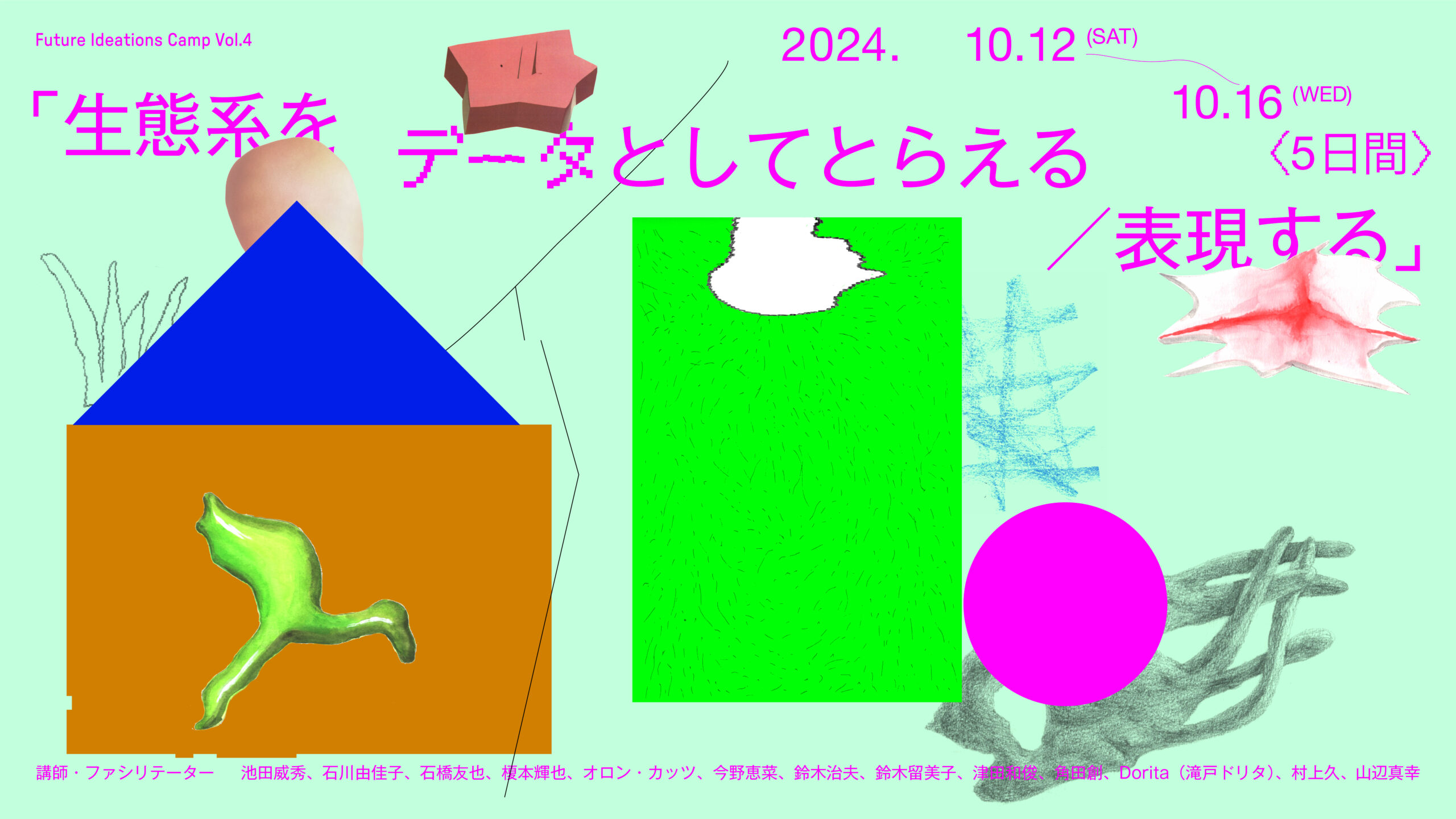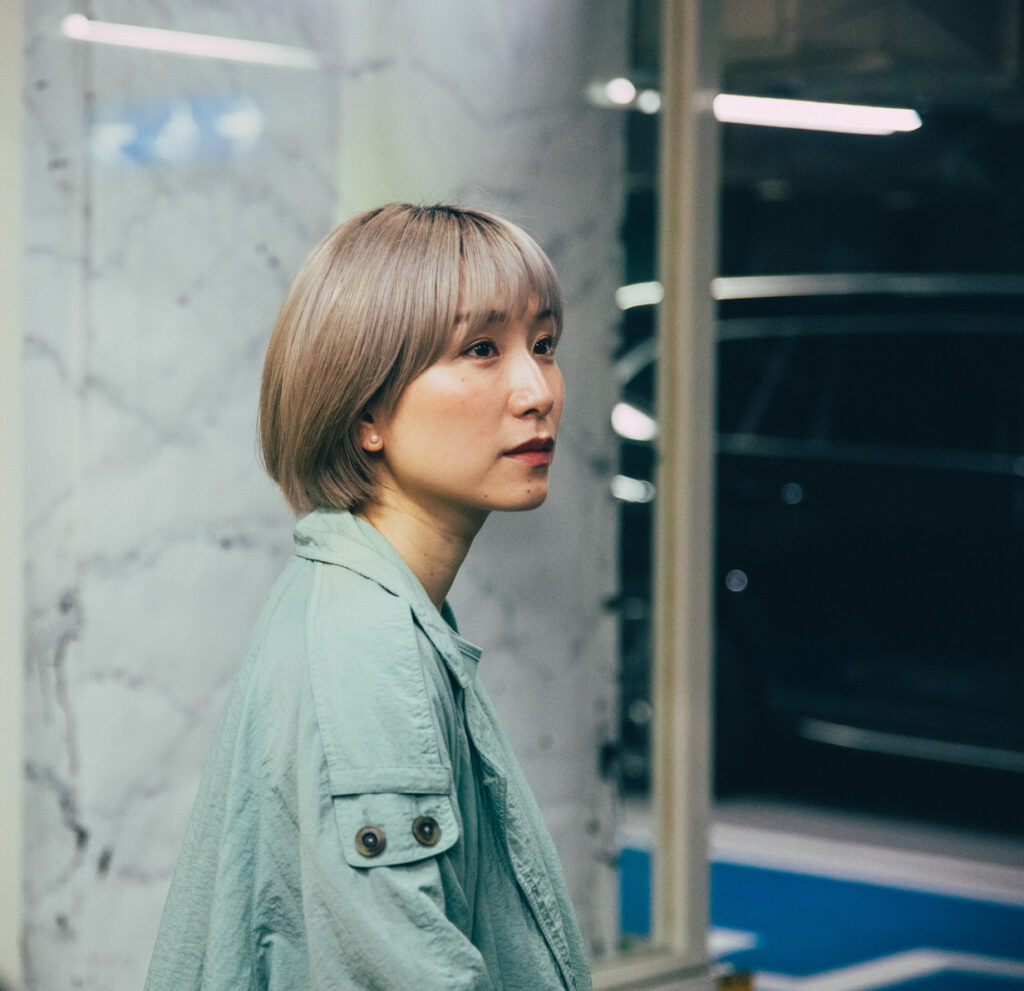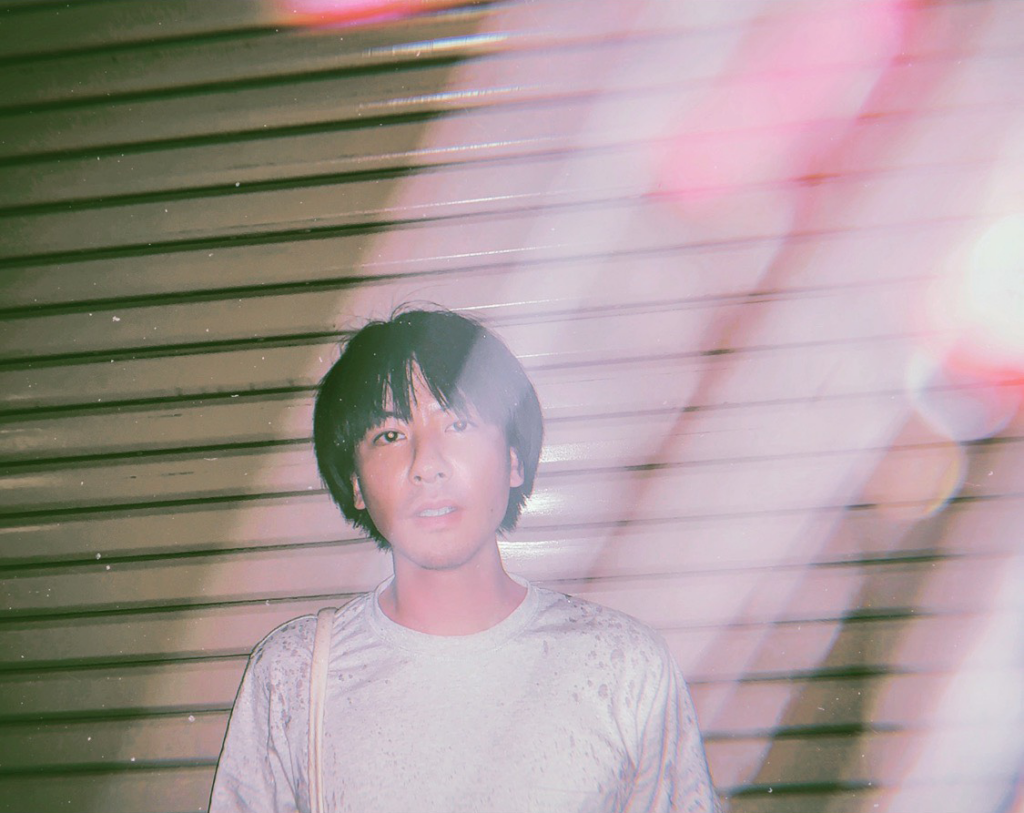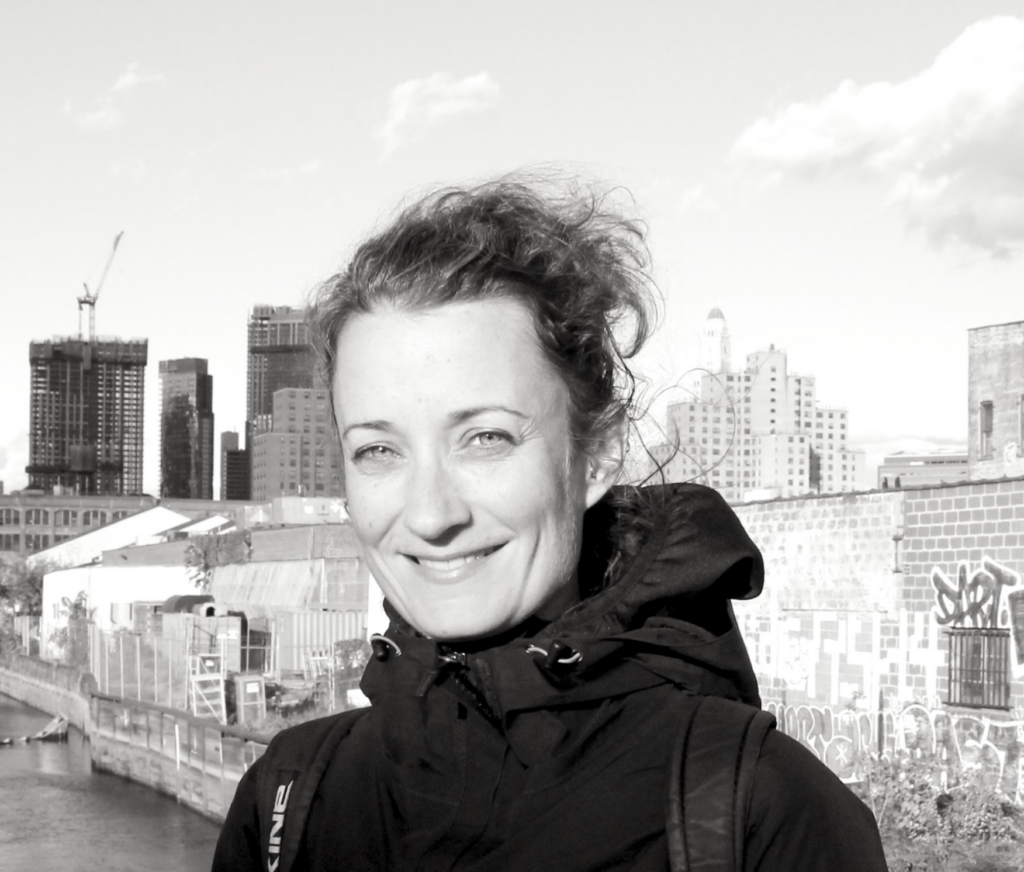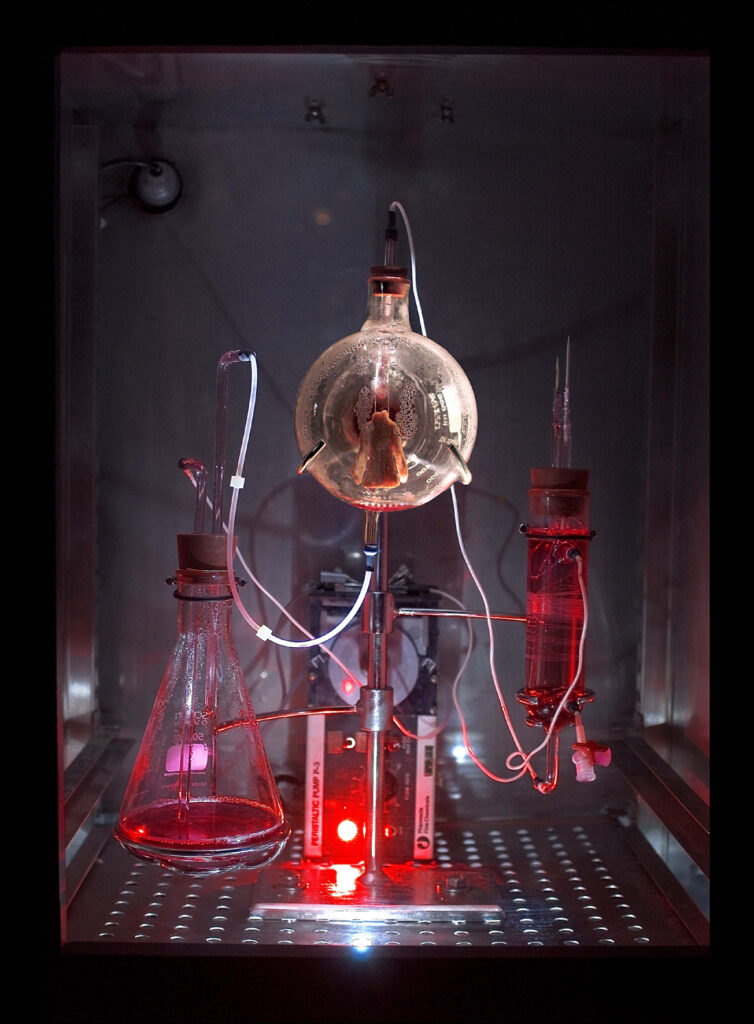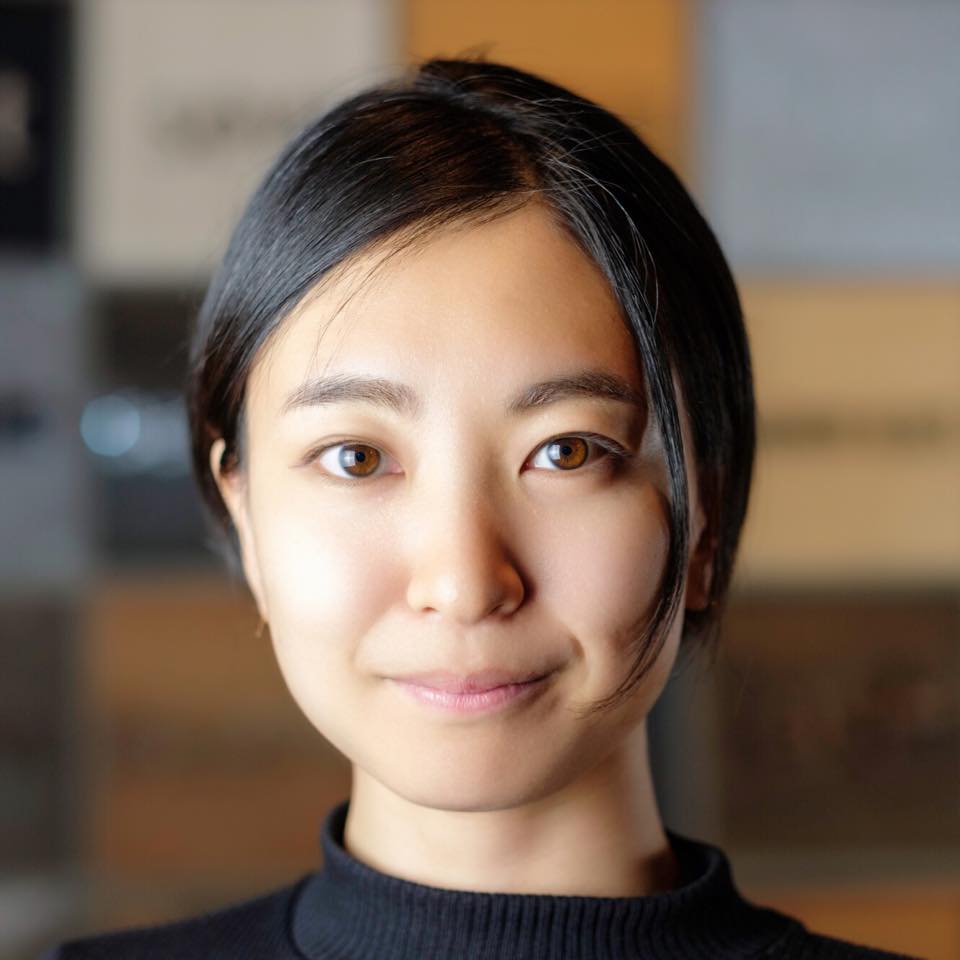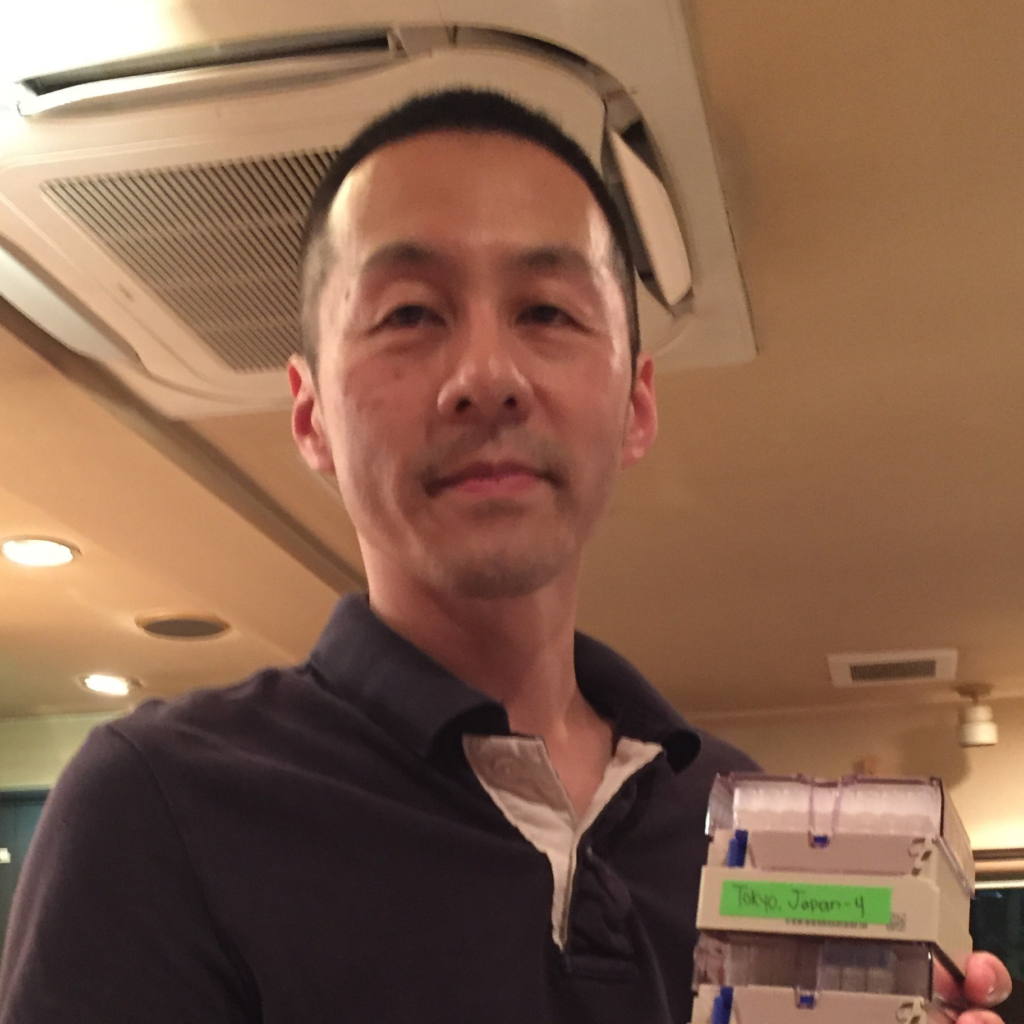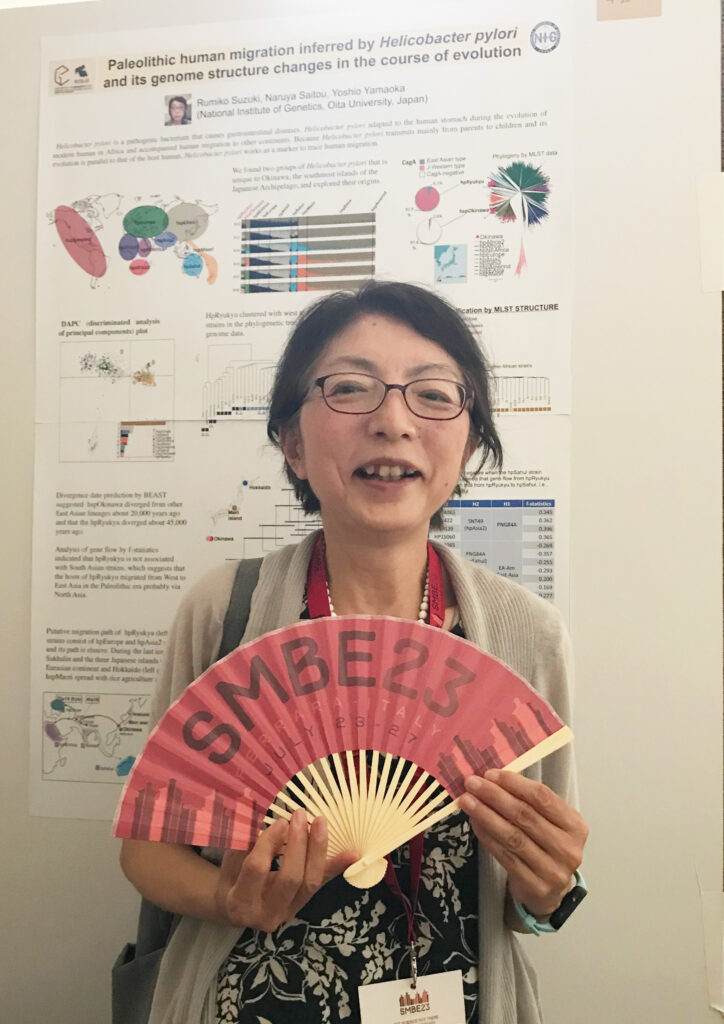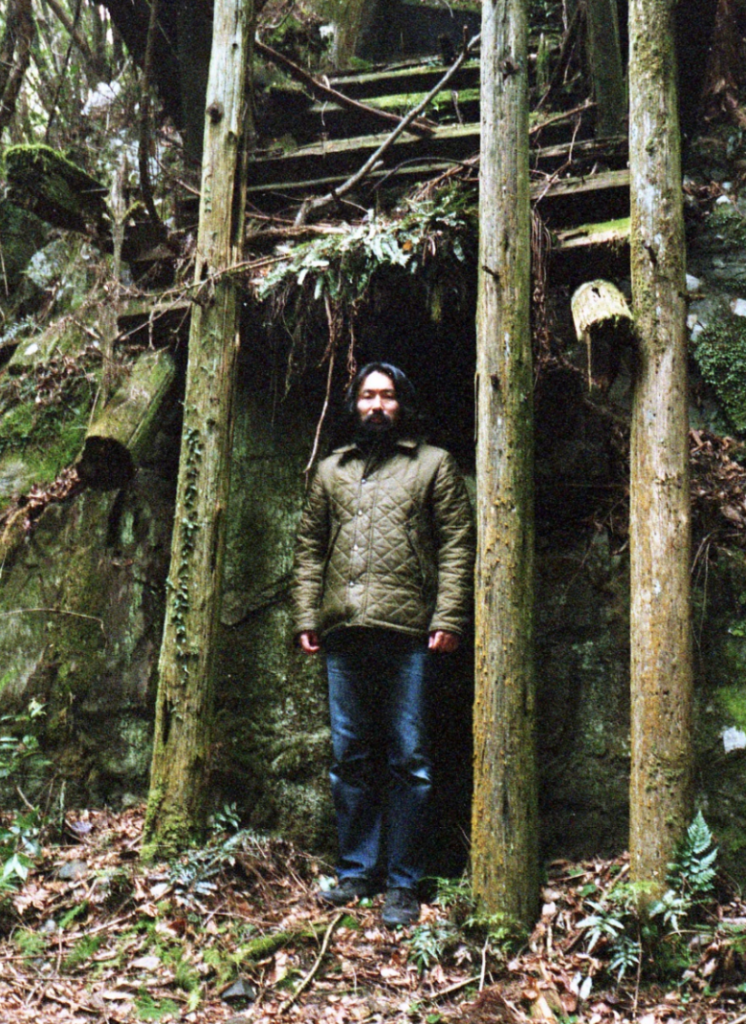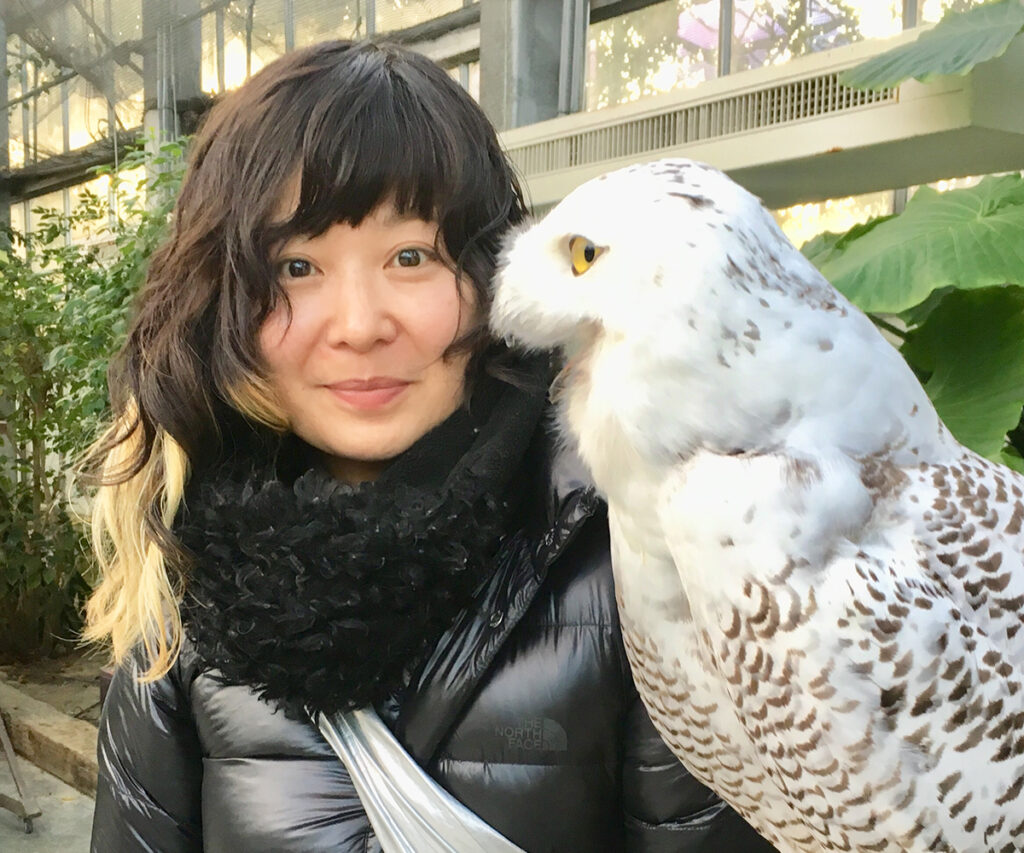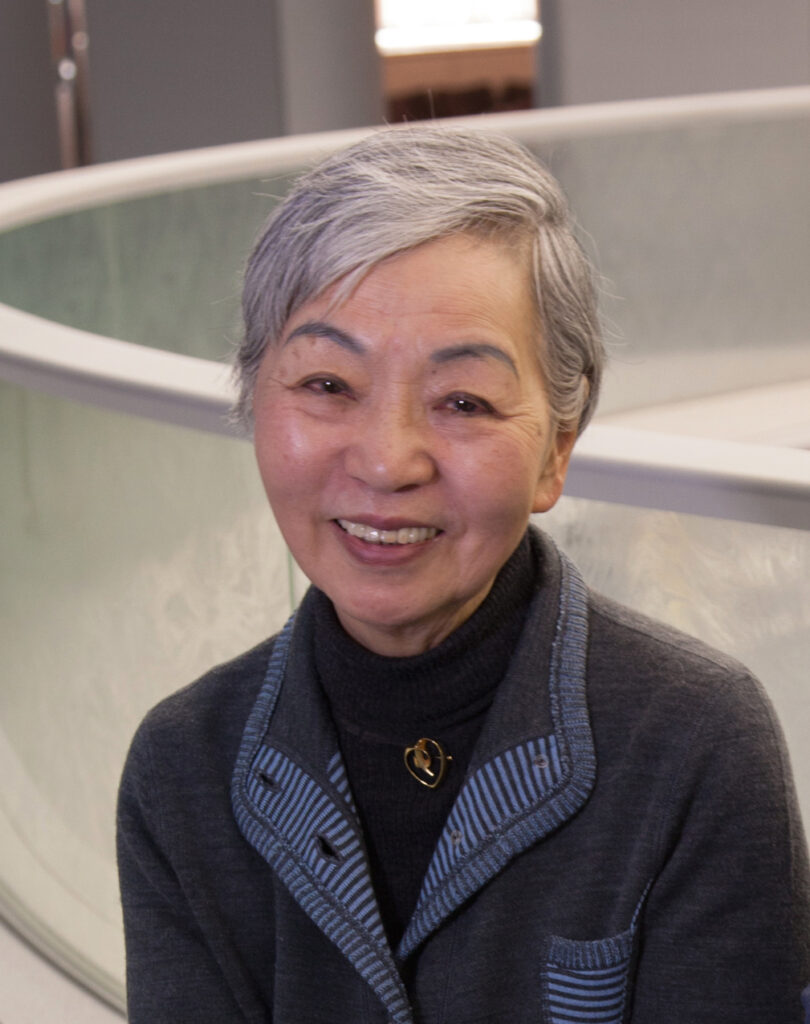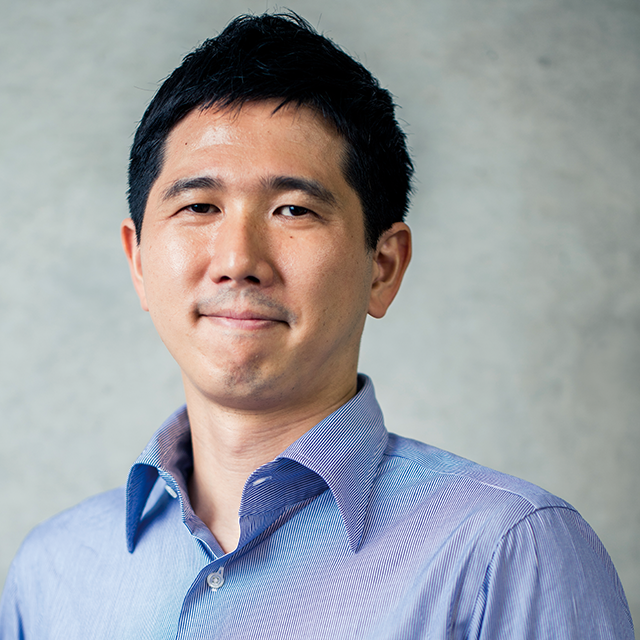Let’s think about future ecosystems! This five-day intensive workshop camp will generate new ideas for enriching ecosystems, including those that involve us. Participants will interpret the existence and behavior of living creatures (even microorganisms!) and their environments as data, and then use this to produce information and forms of creative expression.
Civic Creative Base Tokyo’s Future Ideations Camp is a series of intensive workshops bringing different kinds of people together to work collaboratively and creatively with art and digital technologies. Twenty selected participants take part in several days of lectures to acquire new ways of thinking, workshops for building skill sets, and collaborative group activities. During the camps, the general public are also able to attend talks and presentations of the results.
The fourth iteration of Future Ideations Camp will deal with ecosystems, including ecosystems that involve the human race. An ecosystem is a system of complex, reciprocal relationships between living creatures (including humans) and their environment. Since ancient times, humans have integrated the benefits from these ecosystems into their lives, but the negative effects of our actions are today accelerating. Against this backdrop, gaining a deeper understanding of ecosystems not only gives us fresh perspectives on science, technology, art, and cultural activities, but also reveals new guiding principles for enriching all ecosystems, in which we also play a part. In this camp, participants will adopt hands-on approaches that take an overview of ecosystems and develop a renewed awareness of ecology in order to explore new proposals and ideas related to human activities and roles for society today and in the future.
The curriculum focuses on ecological themes, and features both research and praxis about obtaining, organizing, and interpreting data on living creatures and their surrounding environments. Advances in digital technology have made it more possible than ever to acquire and analyze data on ecosystems. In the workshops, participants will attempt to understand the existence of fauna that inhabit certain areas, including microorganisms, and their behavior as well as surrounding environments as data. In the group work, participants will use invisible and unorganized data on ecosystems as informational content for creative expression, serving as a way to think about future ecology.
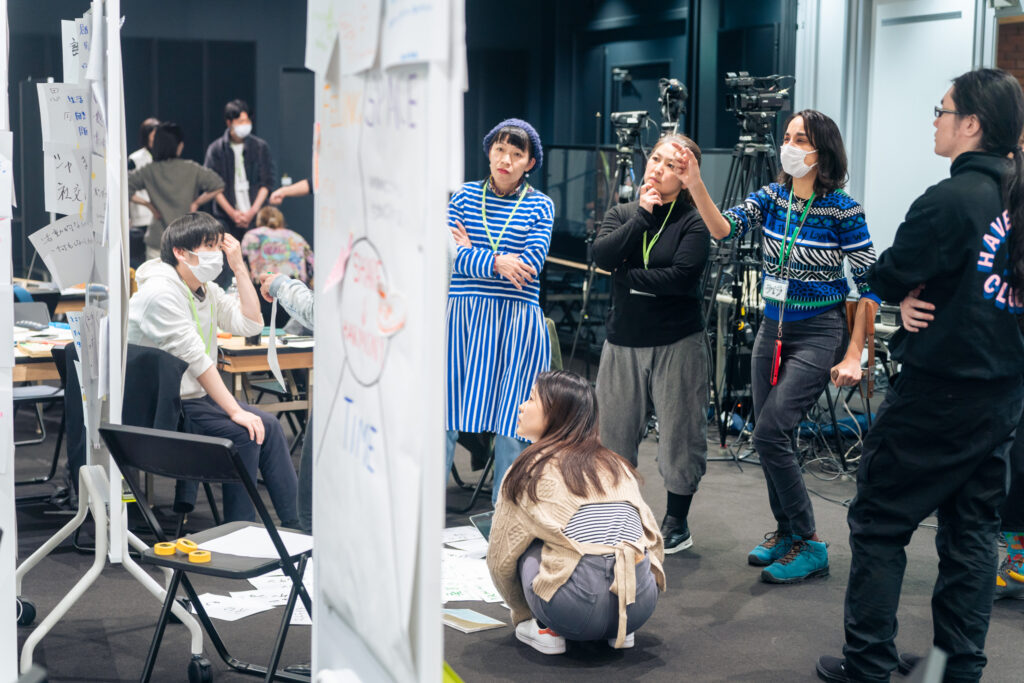
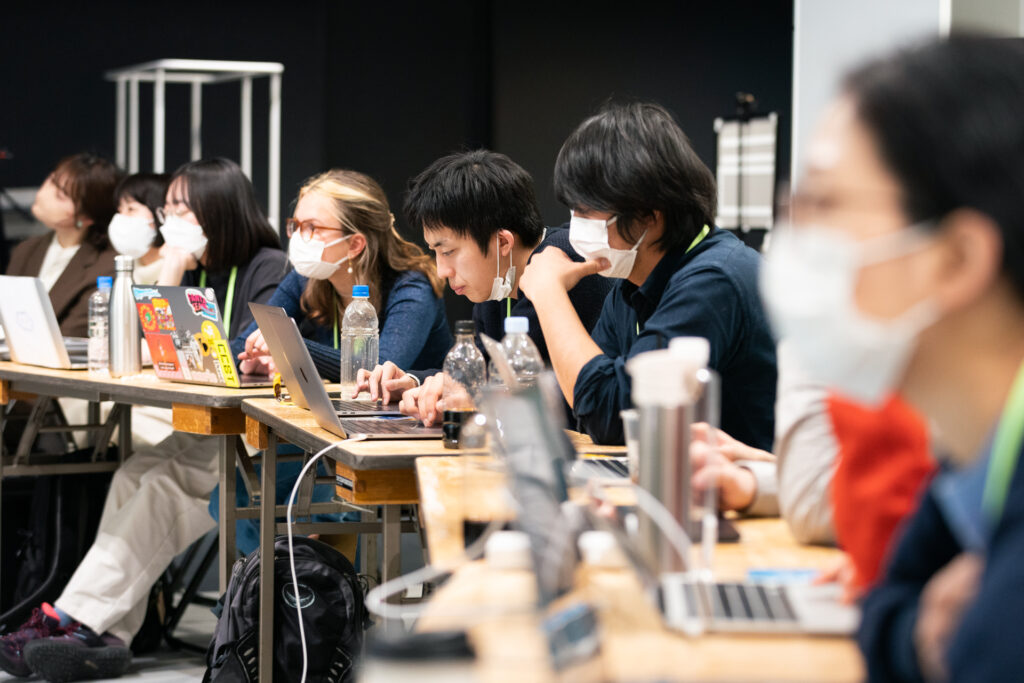
Lecturers / Facilitators:
– Ikeda Takehide (PhD in physics and specializes in ecology and the study of animal behavior, Project Assistant Professor, Utsunomiya University)
– Ishikawa Yukako (urbanist, experience designer / Co-Director, for Cities / Director, Social Green Design / Director, watage)
– Ishibashi Tomoya (artist)
– Oron Catts (artist / co-founder and director of SymbioticA)
– Konno Keina (program, experience designer)
– Suzuki Haruo (Associate Professor, Faculty of Environment and Information Studies, Keio University)
– Suzuki Rumiko (National Institute of Genetics)
– Tsunoda Hajime (designer, engineer)
– Dorita (Takido Dorita) (artist, director, designer)
– Murakami Hisashi (Researcher)
– Yamabe Masaki (Data Visualization Artist, Specially Appointed Assistant Professor at Hitotsubashi University)
Program Director:
– Enomoto Teruya (scientist, researcher)
– Tsuda Kazutoshi (Researcher)
Outline
Dates: October 12 (Sat) – October 16 (Wed), 2024 11:00 am – 7:00 pm (subject to change)
Results Exhibition: October 17 (Thu) – October 20 (Sun), 2024
Briefing session for participants: August 31 (Sat), 2024 14:00 – 16:00
Venue: Civic Creative Base Tokyo [CCBT]
Program & Curriculum
Day 0: Saturday, August 31, 2024
Intro: Camp vol. 4 Objective & Program Directors’ Welcome
Field research
Day 1: Saturday, October 12, 2024
Introduction
Participant self-introductions
Hands-on workshop (Lecturer: Suzuki Haruo)
Day 2: Sunday, October 13, 2024
Hands-on workshop (Lecturer: Yamabe Masaki)
Day 3: Monday, October 14, 2024
Hands-on workshop (Lecturer: Ikeda Takehide)
Day 4: Tuesday, October 15, 2024
Co-creating in groups
Interim presentations
Day 5: Wednesday, October 16, 2024
Co-creating in groups
Final presentations (Results Exhibition: October 17 (Thu) – October 20 (Sun), 2024)
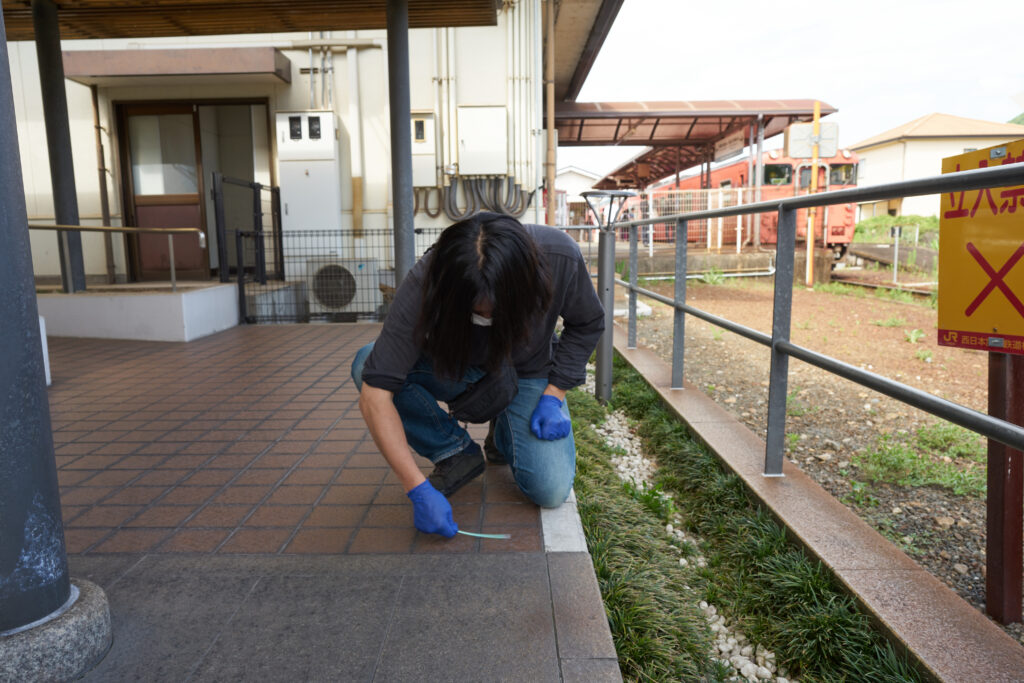
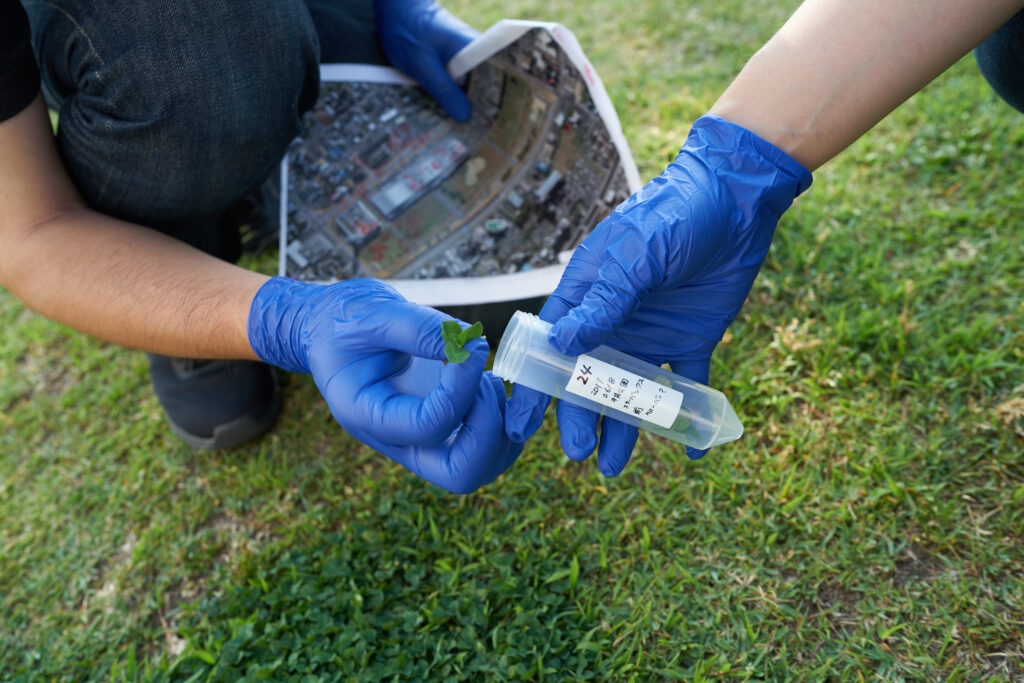

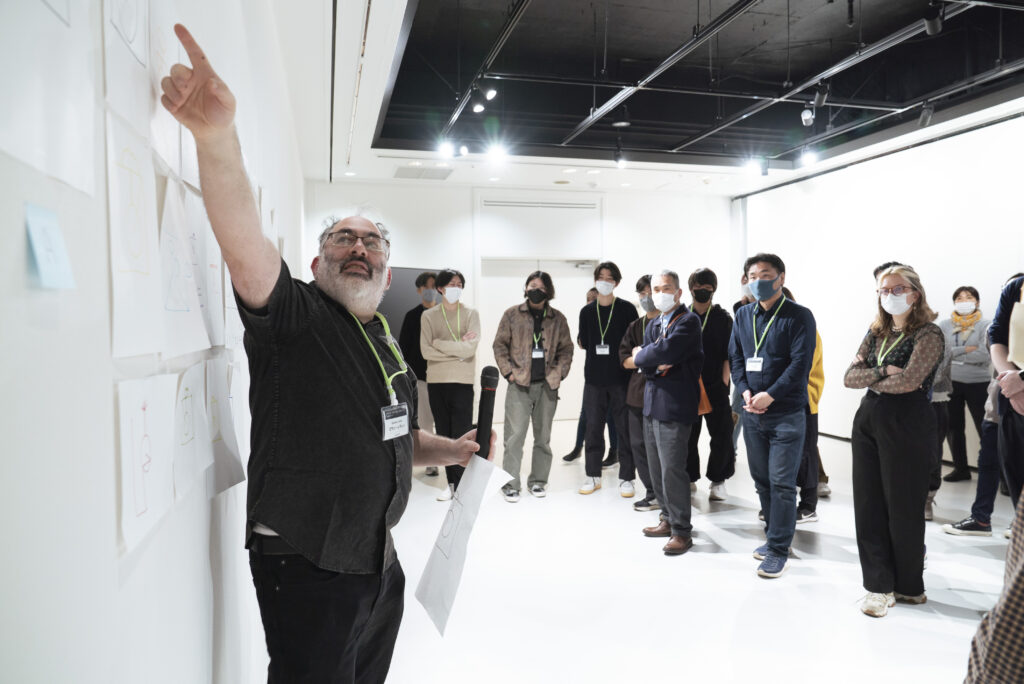
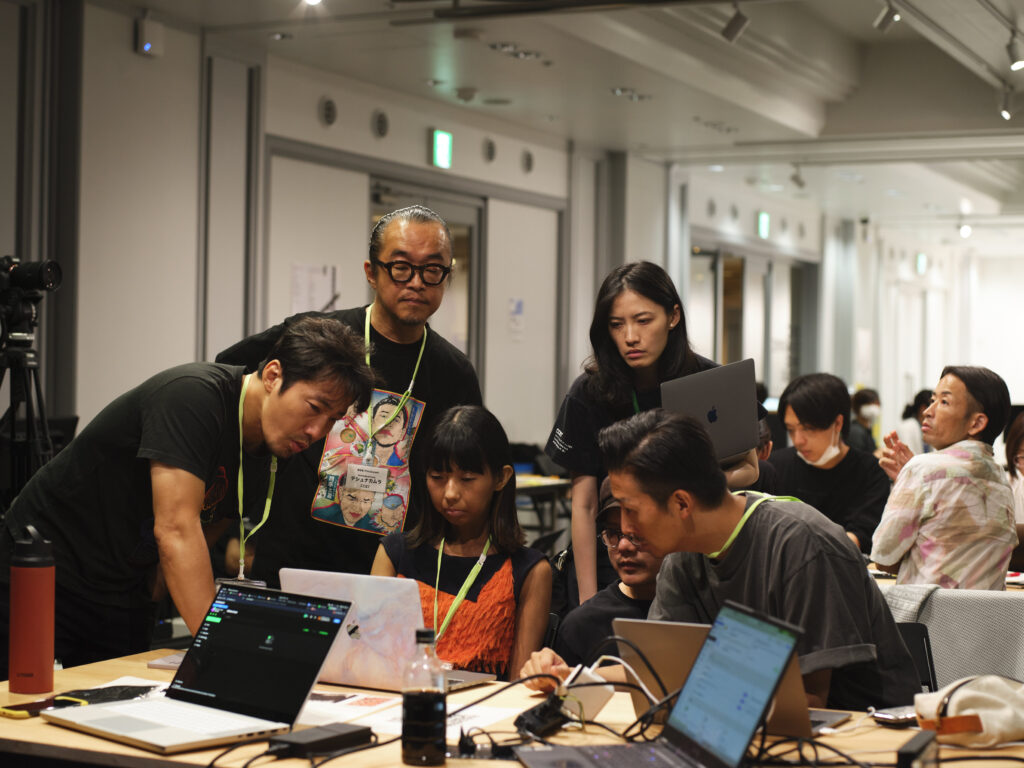

Applications
Application Period: July 23 (Tue) – August 13 (Tue) , 2024
Participant Numbers: Around 20
Participation Requirements:
– Be able to participate in the whole program during the session
– Have a proven track record of research or creative activities
– Be able to apply the content of the workshop to their own future activities
Examples of Suitable Participants:
– Those who want to attempt new creative endeavors using digital technology and ecological observations and public data sets
– Those with an interest in the use of ecosystem information
– Artists and creatives who want to incorporate ecological data into their work in the future
– Those who want to take creative approaches to examining social and ethical dilemmas related to ecosystems
– Researchers and students interested in the use of ecosystem information and in collaborating with people from other fields
Selection Criteria:
In case of too many applications, selection will be made based on the application.
Result Notification:
The result will be notified through email on August 19th, 2024. (subject to change)
Application Process: Please apply via the application form. Alternatively, please send an email (ccbt@rekibun.or.jp) including the following items with “Future Ideations Camp Application” in the subject line.
– Full Name
– Email Address
– Date of Birth
– City of Residence
– Occupation / Affiliation
– Areas of expertise
(Art & Contemporary Art, Design, Product Design, Project Development, Architect / Interior Design, Education, Public Administration, Biology, Chemistry, Humanities, Environmental Studies, Others)
– Reasons and expectations of your participation in this camp (200 words or less)
– Please indicate if you need any accessibility support. (Examples: Finger braille interpretation, Tactile sign language interpretation)
– State the link, if you have a portfolio, video materials, websites, or GitHub that introduces your initiatives.

